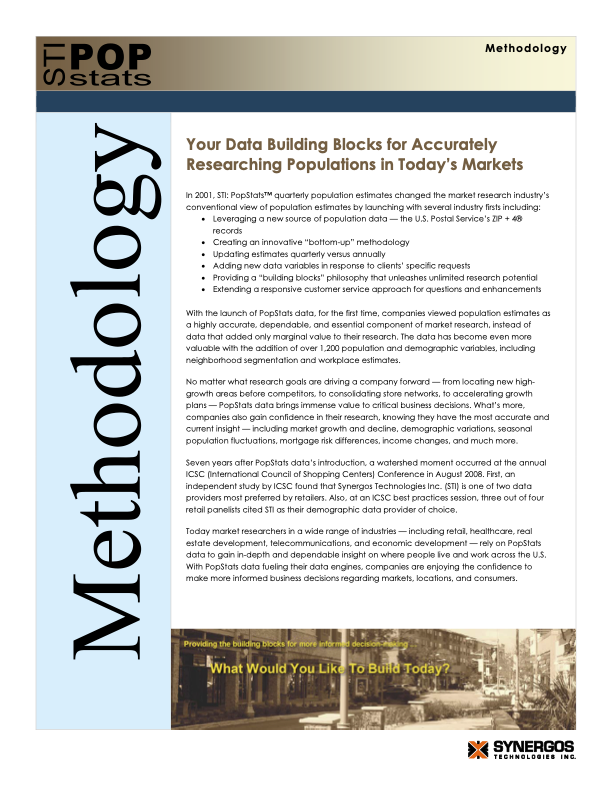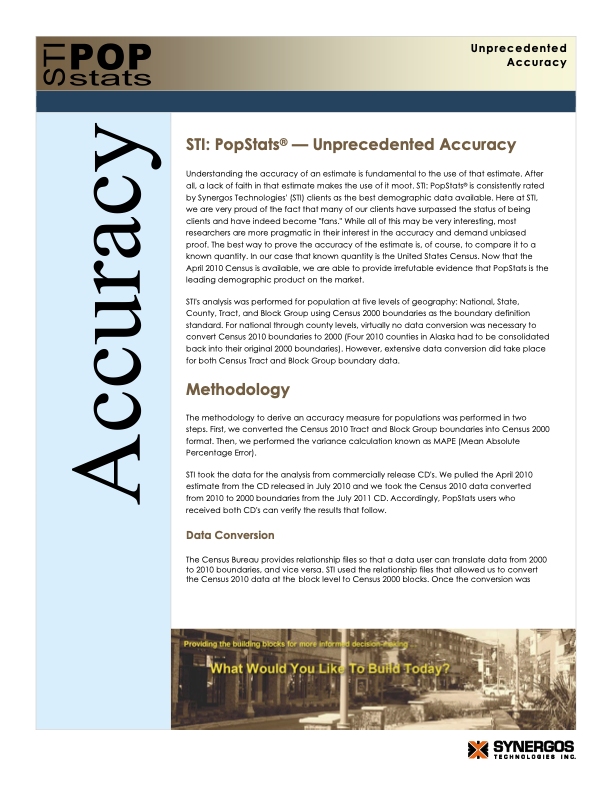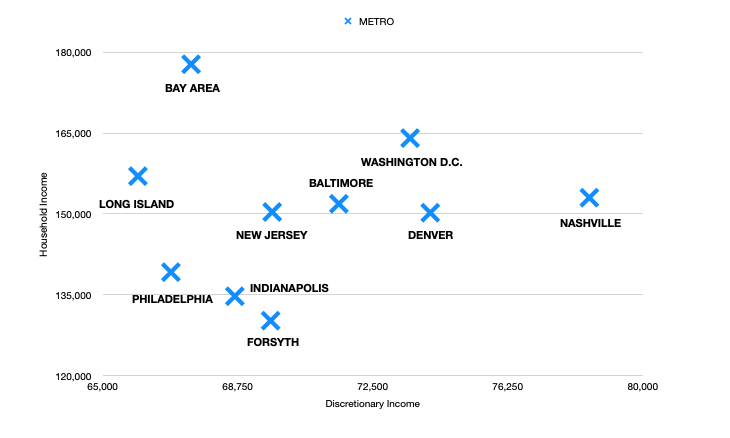The UPDATED Synergos 2020 Census Plan
What to expect in 2023.
The UPDATED Synergos 2020 Census Plan
What to expect from Synergos in 2023.
February 16th, 2023 Update
Since our last update in July 2022, there have been no further updates from the Census Bureau regarding the release of the DHC file. However, we are excited to announce that we are moving up the release of our first 2020 Census baseline estimate from October to July, as we now feel confident in a quick turnaround, dependent on a May 2023 release of the DHC file. As a portion of our customer base has started to use 2020 geographies we have provided our customers with crosswalk tables to help with the translation. To make this transition smoother for our users, a 2010 Census based version translated to 2020 geographies will be available with the April release.
Here’s what to expect from our upcoming releases:
- The April 2023 release will be the first version with a 2020 geography option. Both 2010 and 2020 geography versions will be available. The estimates themselves will continue to be based on a 2010 Census baseline.
- The July 2023 release, which will follow the Census Bureau’s expected release of the 2020 DHC file in May, will be the first version based on the new 2020 baseline. We will also provide a 2010 geography translation version for this release.
- The October release will be the first version available only on 2020 geographies.
What makes Synergos unique, and the reason why we’re the preferred data provider to the majority of industries where site location is mission critical, is that we’re the best at balancing between speed and thoroughness. We appreciate your trust and look forward to navigating these changes with you.
The following Q&A section will hopefully address most of your remaining questions, but please don’t hesitate to reach us through our Contact Us form, or through your primary contact at Synergos for additional information.
What data specifically is missing, and what data from the 2020 Census has been used in the most recent STI:PopStats estimates?
The low level geography counts that have not yet been released, and which are critical to us for performing a full rebuild are; households, persons per household, vacancies, age distributions, and race distributions by age.
Has the ACS release in March 2022 been used to produce the current estimates?
In short, yes. The ACS, which is normally delivered in December, was delayed for the first time ever to the end of March of 2022, which means our Q3 July 2022 release, will be the first to leverage this data. Additionally, this ACS data was published on 2020 Geographies and had to be translated to 2010 geographies for incorporation into our products.
Should we be concerned with the results reported by the Post Enumeration Survey (PES)?
The Census Bureau reported that their PES showed an undercount in six states, and an over count in eight states. Given that the PES is based on a 114,000 household survey and on a theoretical model that the Census doesn’t disclose, we ultimately trust the data reported in the Census as the ultimate truth to rebuild our models. For more on the PES click here.
How does this situation compare to the 2010 Census release?
The SF1 file for the 2010 Census had several versions. The first version was a state-by-state release that occurred between June and August 2011. This allowed us to have our conversion to the 2010 geographies completed by the October 2011 release. If the Census Bureau releases the DHC data around May 2023 that will be about two years behind how the 2010 Census release went.
Why the delay with the 2020 Census Release?
Previous delays could be partially attributed to the Covid-19 pandemic. The current delay centers primarily on the Bureau’s effort to devise a mechanism for keeping personally identifiable information confidential. This is referred to as Differential Privacy, and this evolving methodology will continue to delay an already late release until the Bureau deems it is satisfactorily accomplishing its purpose. Hopefully this time, the Census Bureau’s publication date of May 2023 holds and does truly provide the necessary time for them to complete this task.
Curious about PopStats? Reach out and we’d be glad to help!

















